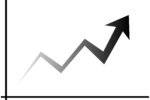All About Trading and Ultra Low Latency Technology

All About Trading and Ultra Low Latency Technology
In the dynamic landscape of the trading industry, a wave of captivating innovations is taking place. Spearheading the forefront of trading advancements are high-frequency trading firms, harnessing the power of algorithms to pursue trades at unparalleled speeds.
At the core of these lightning-fast trades lies the foundation of ultra-low latency technologies. These cutting-edge advancements facilitate the swift transfer of transactional data, operating at astonishing speeds.
Let us check out three significant aspects related to achieving the fastest trade with ultra-low latency technology.
- Revolutionizing infrastructure for zero latency battles
In the high-octane world of high-frequency trading, every second counts, potentially translating into millions of dollars. In this perpetually accelerating industry, even the tiniest nanoseconds of latency can determine success or failure. The ongoing pursuit of zero latency is an unrelenting race that shows no signs of slowing down, with the key to reaching this pinnacle lying in the realm of networking. Making the right networking decisions is a vital component of the intricate ultra-low latency strategy puzzle.
Introducing one of the latest breakthroughs in the quest for lower latency and minimal loss within high-frequency trading: hollow core fiber optic cable. Departing from the conventional solid core design that employs glass fibers and silicate as the propagation medium, these innovative hollow core optical fibers take a unique approach by being filled with air. By utilizing only a small amount of physical propagation medium, typically glass, low latency technology achieves the transmission of signals with unparalleled efficiency.
- The need for precise timestamping in high-frequency trading
For high-frequency trading, the significance of accurate and verifiable timestamping cannot be overstated. It serves as a vital foundation for trading firms, enabling them to validate transactions, establish ownership rights, and resolve disputes with confidence. Through the utilization of digital ledger technology, the exact moment of trade execution is recorded, granting financial services firms the ability to trace transactions with nanosecond precision.
- Conflict between regulations and technology
The ongoing conflict between regulation and technology is characterized by a delicate balance. On one hand, regulations in the realm of high-frequency trading foster uniformity, streamline transactions, and facilitate the resolution of disputes. Conversely, these regulations place the burden on firms to seek out innovative network and cloud-based solutions, such as digital ledger technology mentioned earlier. This particular technology enables the precise, auditable, and protected timestamping of transactions, ensuring compliance with regulatory obligations.
To keep up with all these advancements, Orthogone ultra-low latency network is all that you need today.





